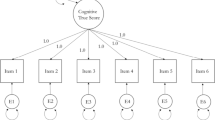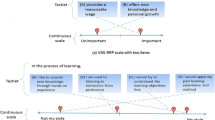Abstract
Several examples that serve to validate the AHP/ANP with matrices hierarchies and networks are given in this paper. They are then followed by a discussion of the real numbers and how they are generated without the need for an absolute zero, and how they define an absolute scale of measurement that also does not need an absolute zero. In the AHP/ANP the measurement of an alternative depends on what other alternatives it is compared with. The result is that rank can change if alternatives are added or deleted, something that does not occur in one-at-a-time rating of the alternatives by comparing them with an ideal. An example is provided to show that this is natural and need not involve new criteria or change in judgments. A brief discussion of Utility Theory, the other multi-criteria theory, which uses interval scales to measure intangibles and some of its problems and paradoxes, is given. The references at the end include most of the papers that are adverse to the AHP with brief comments about several of them given in the paper.
Similar content being viewed by others
References
Barzilai, J., “On the decomposition of value functions”, Operations Research Letters, Vol. 22, pp159–170, 1998a.
Barzilai, J., “Consistency measures for pairwise comparison matrices”, Journal of Multi-Criteria Decision Analysis, Vol. 7, pp1232–132, 1998b.
Barzilai, J. and F. A. Lootsma, “Power relations and group aggregation in the multiplicative ahp and smart”, Journal of Multi-Criteria Decision Analysis, Vol. 6, pp155–165, 1997.
Belton, V. and A. E. Gear, “On a short-coming of saaty’s method of analytic hierarchies,” Omega, Vol. 11, No. 3, pp228–230, 1983.
Belton, V. and A. E. Gear, “The legitimacy of rank reversal — a comment”, Omega, Vol. 13, No. 3, pp143–144, 1985.
Beynon, M. J., “An investigation of the role of scale values in the ds/ahp method of multi-criteria decision making”, Journal of Multi-Criteria Decision Analysis, Vol. 11, pp327–343, 2002.
Blair, A., R. Nachtmann, J. Olson, and T. Saaty, “Forecasting foreign exchange rates: an expert judgment approach”, Socio-Economic Planning Sciences, Vol. 21, No. 6, pp363–369, 1987.
Corbin, R., and A.A.J. Marley, “Random utility models with equality: an apparent, but not actual, generalization of random utility models”, Journal of Mathematical Psychology, Vol. 11, pp274–293, 1974.
Costa, C. A. B. e. and J.-C. Vansnick, “A fundamental criticism to Saaty’s use of the eigenvalue procedure to derive priorities”, The London School of Economics and Political Science, Working Paper: LSEOR 01.42, 2001.
Dantzig T., Number the Language of Science, the Macmillan Company, 1954.
Dehaene, S., The Number Sense, How the Mind Creates Mathematics, Oxford University Press, pp73, 1997.
Dyer, J. S. “Remarks on the analytic hierarchy process”, Management Science, Vol. 36, No. 3, pp249–258, 1990.
Finan, J.S. and W.J. Hurley, “The analytic hierarchy process: can wash criteria be ignored?”, Computers and Operations Research Vol. 29, No. 8, pp1025–1030, 2002.
Holder, R. D., “Some comments on the analytic hierarchy process”, Journal of the Operational Research Society, Vol. 41, No. 11, pp1073–1076, 1990.
Hurley, W. J., “Letters to the editor: strategic risk assessment”, Canadian Military Journal, (Summer): pp3–4, 2002.
Kamenetzky, R. D., ”The additive value function”, Decision Sciences, Vol. 13, No. 4, pp702–713, 1982.
Leskinen, P., “Measurement scales and scale independence in the analytic hierarchy process”, Journal of Multi-Criteria Decision Analysis, Vol. 9, pp163–174, 2000.
Lootsma, F.A, ”Scale sensitivity in the multiplicative AHP and SMART”, Journal of Multi-Criteria Decision Analysis, Vol. 2. pp87–110, 1993.
Luce, R. and H. Raiffa, Games and Decisions, John Wiley and Sons, 1957.
Machina M. J., “Choice under uncertainty: problems solved and unsolved”, Economic Perspectives, Vol. 1, No. 1, pp121–154, 1987.
McCord, M. and R. de Neufville, “Empirical demonstration that expected utility decision analysis is not operational”, Chapter in Foundation of Utility and Risk Theory with Applications, Stigun Wenstop (ed.), Reidel Publishing Company, Boston, pp181–200, 1983.
Millet, I. and W. C. Wedley, “Modelling risk and uncertainty with the analytic hierarchy process”, Journal of Multi-Criteria Decision Analysis, Vol. 11, pp97–107, 2002.
Perez, J., J.L. Jimeno and E. Mokotoff, “Another potential strong shortcoming on ahp”, Working Paper, Universidad de Alcala, Spain, 2004.
Russell B., Introduction to Mathematical Philosophy, George Allen and Unwin, LTD., London 1948.
Saaty, R.W., “Why barzilai’s criticisms of the ahp are incorrect”, Proceedings of the International MCDM Meeting at Whistler Canada. P, 2004
Saaty, T., “That is not the analytic hierarchy process: what the AHP is and what it is not”, J. Multi-Crit. Decis, Anal. 6, pp320–339, 1997.
Saaty, T. and Y. Cho, “The decision by the us congress on China’s trade status: a multicriteria analysis”, Socio-Economic Planning Sciences, No. 35, pp 243–252, 2001
Saaty, T., and H. Gholamnezhad, “A desired energy mix for the united states in the year 2000: an analytic hierarchy approach”, International Journal of Policy Analysis and Information Systems, Vol. 6, No. 1, 1982.
Saaty T. and M. Khouja “A measure of world influence,” Journal of Peace Science, Spring, 1976.
Saaty, T. and D. S. Turner, “Prediction of the 1996 super bowl an application of the ahp with feedback (the supermatrix approach”, Fourth International Symposium on The Analytic Hierarchy Process, Simon Fraser University, Burnaby, B.C., Canada, July, pp 12–15, 1996.
Saaty, T., and L. Vargas, “Estimating technological coefficients by the analytic hierarchy process,” Socio-Economic Planning Sciences, Vol. 13, pp333–336, 1979.
Saaty, T. and L. G. Vargas, et al., “Assessing attribute weights by ratios”, Omega Vol. 11, No. 1, pp9–13, 1983.
Saaty, T. and L. G. Vargas, “The legitimacy of rank reversal”, Omega, Vol. 12. No. 5, pp513–516, 1984.
Saaty, T., and L. Vargas, Prediction, Projection and Forecasting, Kluwer Academic Publishers, 1991 (b).
Saaty, T., and L. Vargas, The Logic of Priorities, R.W.S. Publications, 1991(a).
Saaty, T. and L. G. Vargas, “Experiments on rank preservation and reversal in relative measurement”, Mathematical and Computer Modeling, Vol. 17, No. 4–5, pp13–18, 1993.
Saaty, T. and L. Vargas, “Diagnosis with dependent symptoms: bayes’ theorem and the analytic hierarchy process”, Operations Research, Vol. 46, No. 4, July–August, 1998.
Saaty, T., and L. Vargas, “The analytic hierarchy process: can wash criteria be ignored?”, To appear in the International Journal of Management and Decision Making, 2005.
Saaty, T. L. Vargas and R. Wendell, “Assessing attribute weights by ratios”, Omega: The International Journal of Management Science, Vol. 11, No. 1, pp9–13, 1983.
Saaty, T. and M. Wong, “The average family size in rural India”, Journal of Mathematical Sociology, Vol. 9, pp181–209, 1983.
Salo, A. A. and R. P. Hamalainen, “On the measurement of preferences in the analytic hierarchy process”, Journal of Multi-Criteria Decision Analysis, Vol. 6, No.6, pp309–319, 1997.
Sarin R.K., “Strength of preference and risky choice”, Operations Research, Vol. 30, No. 5, pp982–997, 1982.
Schenkerman, S., “Avoiding rank reversal in ahp decision-support models”, European Journal of Operational Research, Vol. 74, pp407–419, 1994.
Schenkerman, S., “Inducement of nonexistent order bt rgw analytic hierarchy process”, Decision Sciences, Vol. 28, No. 2, pp475–482, 1997.
Schoner, B., Wedley, W. C. and Choo, E. U., “A unified approach to ahp with linking pins”, European Journal of Operational Research, Vol. 64, pp345–354, 1993.
Stam, A. and A.P. Duarte Silva, “On multiplicative priority ranking methods for the AHP”, European Journal of Operational Research, Vol. 145, No. 1, pp92–108, 2003.
Stewart, T.J., “A critical survey on the status of multicriteria decision making theory and practice”, Omega, Vol. 20, No.5–6, pp569–586, 1992.
Surowiecki, James, The Wisdom of Crowds: Why the Many Are Smarter Than the Few and How Collective Wisdom Shapes Business, Economies, Societies and Nations, Doubleday, Little, Brown, 2004, reviewed in The Economist, May 29, 2004.
Author information
Authors and Affiliations
Additional information
Thomas L. Saaty is a member of the National Academy of Engineering, holds the Chair of University Professor, Katz Graduate School of Business, University of Pittsburgh, Pittsburgh, PA, and obtained his Ph.D. in mathematics from Yale University. Before that he was a professor at the Wharton School of the University of Pennsylvania for ten years. Prior to that he spent seven years at the Arms Control and Disarmament Agency in the State Department in Washington, DC, that carried out the arms reduction negotiations with the Soviets in Geneva. His current research interests include decision-making, planning, conflict resolution and synthesis in the brain. As a result of his search for an effective means to deal with weapons tradeoffs at the Disarmament Agency and, more generally, with decision-making and resource allocation, Professor Saaty developed The Analytic Hierarchy Process (AHP) and its generalization to dependence and feedback, the Analytic Network Process (ANP). He is co-developer of the software Expert Choice and of the software Super Decisions for decisions with dependence and feedback. He has authored or co-authored twelve books on the AHP/ANP. Professor Saaty has also written a number of other books that embrace a variety of topics, including Modern Nonlinear Equations, Nonlinear Mathematics, Graph Theory, The Four Color Problem, Behavioral Mathematics, Queuing Theory, Optimization in Integers, Embracing the Future and The Brain: Unraveling the Mystery of How It Works. His most recent book is Creative Thinking, Problem Solving & Decision Making. The book is a rich collection of ideas, incorporating research by a growing body of researchers and practitioners, profiles of creative people, projects and products, theory, philosophy, physics and metaphysics...all explained with a liberal dose of humor. He has published more than 300 refereed articles in a wide variety of professional journals. He has been on the editorial boards of Mathematical Reviews, Operations Research, Naval Research Logistics Quarterly, Mathematical and Computer Modeling, Socio-Economic Planning Sciences, Applied Mathematics Letters, and several others. He also served as consultant to many corporations and government.
Rights and permissions
About this article
Cite this article
Saaty, T.L. Making and validating complex decisions with the AHP/ANP. J. Syst. Sci. Syst. Eng. 14, 1–36 (2005). https://doi.org/10.1007/s11518-006-0179-6
Issue Date:
DOI: https://doi.org/10.1007/s11518-006-0179-6




